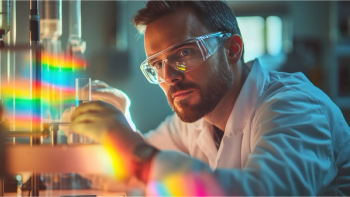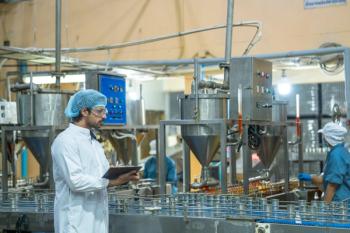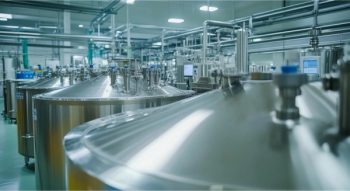
- March 2025
- Volume 40
- Issue 3
- Pages: 26
Cherry Tomatoes’ Flavor Compounds Measured with Near-Infrared Spectroscopy
Near-infrared spectroscopy was recently used to estimate sweetness and total soluble solids content in cherry tomatoes.
Scientists from the Norwegian Institute of Food, Fisheries, and Aquaculture Research in Aas, Norway recently used near-infrared (NIR) spectroscopy to estimate total soluble solids (TSS) content in cherry tomatoes. Their findings were published in Spectrochimica Acta Part A: Molecular and Biomolecular Spectroscopy (1).
Flavors play significant roles in consumers’ preferences and choices of fruits and vegetables, being able to mask bitterness or unpleasant flavors. Consumer interests and loyalty are greatly affected by sensory satisfaction, so delivering stable quality is vital to keep market shares. Novel spectroscopic sensors could facilitate positive consumer experiences through measuring food sweetness along the entire value chain. Novel value chain management based on reliable knowledge of sweetness could result in increased public consumption, reduced food waste, and increased value for growers and distributors. However, currently there is a lack of practical, accurate, and affordable non-contact sugar sensor systems that enable automatic produce sorting in packing lines.
With this study, the scientists report how total soluble solids (TSS), which can be used to measure total sugar content, can be measured in cherry tomatoes using non-contact near-infrared (NIR) interactance spectroscopy. TSS content includes a fruit’s carbohydrates, organic acids, proteins, fats, and minerals. It can represent 10–20% of a fruit’s fresh weight, and as fruit matures, the value increases to produce sweeter, less acidic fruit (2).
A prototype system working in the wavelength range 760–1080 nm was tested and compared with a commercial handheld NIR reflection instrument operating in the range of 909–1676 nm. The instruments were calibrated using data from 200 tomatoes and tested on 5 independent sets harvested over 14 months. In total, 611 single tomatoes and 22 tomato trusses were tested as part of the experiment. For single tomatoes, TSS ranged from 5.3–14%, and NIR interaction obtained typical standard errors of prediction in the range 0.38–0.52%, significantly lower (p < 0.05) compared to NIR reflection (0.70–0.98%). Further, approximately the same accuracy was obtained using interaction measurements on tomatoes moving on a conveyor belt, both in laboratories (0.47–0.53%) and in industry (0.39%). Whole tomato trusses were measured in movement, and TSS could successfully be measured in each tomato on the truss. Three of the test sets were subjected to sensory analysis performed by a trained panel of 10 assessors, revealing high correlations (0.88–0.99) between sensory sweetness and NIR estimated TSS.
Calculating TSS in cherry tomatoes relying on non-contact NIRS interaction provided stable estimates with low prediction errors in five test sets collected over 14 months. Correlation with TSS reference values for one of the test sets was low, likely due to deviations in reference measurements, since the correlation between NIRS estimated TSS and sensory sweetness was high. Compared to reflection spectroscopy, interaction spectroscopy seems to be more robust for estimating TSS in cherry tomatoes. This likely stems from interaction systems measuring deeper into tomatoes, proving less sensitive to variations in the surface of tomatoes. By allowing non-contact collection of high-quality NIR spectra in varying ambient light, the instrument design enables measurements on moving objects. Overall, this methodology proves promising for rapid and non-contact sorting of tomato packing lines.
References
(1) Wold, J. P.; Sanden, K. W.; Skaret, J.; et al. Non-Contact Interactance NIR Spectroscopy for Estimating TSS and Sensory Sweetness in Conveyor-Belt Transported Cherry Tomatoes (Lycopersicon esculentum ’Piccolo’). Spectrochim. Acta – A: Mol. Biomol. Spec. 2025, 335, 125962. DOI:
(2) Managing Citrus Total Soluble Solids (TSS). Yara 2025.
Articles in this issue
9 months ago
Vol 40 No 3 Spectroscopy March 2025 Europe PDF9 months ago
The Big Review V: The C-O BondNewsletter
Get essential updates on the latest spectroscopy technologies, regulatory standards, and best practices—subscribe today to Spectroscopy.




